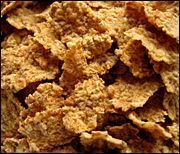Whether you accept it, avoid it or live somewhere in between, insurance coverage has become a defining issue for our profession. Patients increasingly expect to use their benefits, practitioners want to be compensated fairly for their time and expertise, and the system itself remains – at best – fragmented. The encouraging news is that coverage has expanded in meaningful ways. The challenging news is that reimbursement, across the board, remains inadequate.
Vitamins, Minerals and Dietary Supplements
Fiber (Insoluble)
What is insoluble fiber? Why do we need it?
Fiber is divided into two general categories - water soluble and water insoluble. This article will discuss insoluble fiber. Information on soluble fiber can be found elsewhere on this site.
Insoluble fiber is a subclass of dietary fiber, and is considered "insoluble" because its main components do not readily dissolve in water and are not metabolized by intestinal bacteria. The main ingredients in insoluble fiber are cellulose, hemicellulose and lignans, which form the structural parts of plants.
 Insoluble fiber plays a vital role in digestion. It absorbs water in the intestines and enlarges and softens a person's stools, helping to ease elimination of waste. There is also evidence that insoluble fiber helps to protect people from heart disease and colon cancer; scientists have hypothesized that the main components of insoluble fiber bind to carcinogens, which are then carried from the body along with the fiber as waste products. Dietary fiber gained from fruits and vegetables is believed to have the most protective effects.
Insoluble fiber plays a vital role in digestion. It absorbs water in the intestines and enlarges and softens a person's stools, helping to ease elimination of waste. There is also evidence that insoluble fiber helps to protect people from heart disease and colon cancer; scientists have hypothesized that the main components of insoluble fiber bind to carcinogens, which are then carried from the body along with the fiber as waste products. Dietary fiber gained from fruits and vegetables is believed to have the most protective effects.
How much insoluble fiber should I take?
The amount of fiber in the average Western diet is approximately 10 grams per day. However, many scientists recommend that people should consume between 40 and 60 grams of a combination of soluble and insoluble fiber daily.
What forms of insoluble fiber are available?
High levels of insoluble fiber are found in whole grains, especially brown rice. Bran and other wheat products also have high levels of insoluble fiber. Beans, many fruits, psyllium, and some vegetables contain significant amounts of both soluble and insoluble fiber. Insoluble fiber can also be purchased as a supplement, usually in powder form.
What can happen if I take too much insoluble fiber? Are there any interactions I should be aware of? What precautions should I take?
Because insoluble fiber high absorbs water in the intestines, high fluid intake is also necessary. Some insoluble fibers, such as bran, may reduce the absorption of calcium into the body. As such, patients with low calcium levels should consult a health care provider before taking large amounts of fiber. People diagnosed with scleroderma should also consult a health care provider before taking fiber supplements or implementing a diet high in fiber.
Certain medications, such as Lovastatin, Verapamil and Propoxyphene, may interact with fiber supplements. As always, make sure to consult with a licensed health care provider before taking soluble fiber or any other herbal remedy or dietary supplement.
References
- Brown L, Rosner B, Willett WW, Sacks FM. Cholesterol-lowering effects of dietary fiber: a meta-analysis. Am J Clin Nutr 1999;69:30-42.
- Gough A, Sheeran T, Bacon P, et al. Dietary advice in systemic sclerosis: the dangers of a high fibre diet. Ann Rheum Dis 1998;57:641-2.
- Jenkins DJA, Kendall CWC, Ransom TPP. Dietary fiber, the evolution of the human diet and coronary heart disease. Nutr Res 1998;18:633-52.
- Nuttall FW. Dietary fiber in the management of diabetes. Diabetes 1993;42:503-8.
- Salmeron J, Manson JAE, Stampfer MJ, et al. Dietary fiber, glycemic load, and risk of non-insulin-dependent diabetes mellitus in women. JAMA 1997;277:472-7.


